Innovative construction materials and techniques that enable enhanced performance, durability, and multi-functionality in structures
-
- Carbon-reducing Concrete Technology
- Eco-friendly and carbon-reducing concrete manufacturing technology - designed to minimize or eliminate the use of cement, the primary ingredient in concrete responsible for high CO₂ emissions, to reduce the carbon footprint of concrete - is vital for achieving carbon reduction goals and addressing ESG aspects.
-
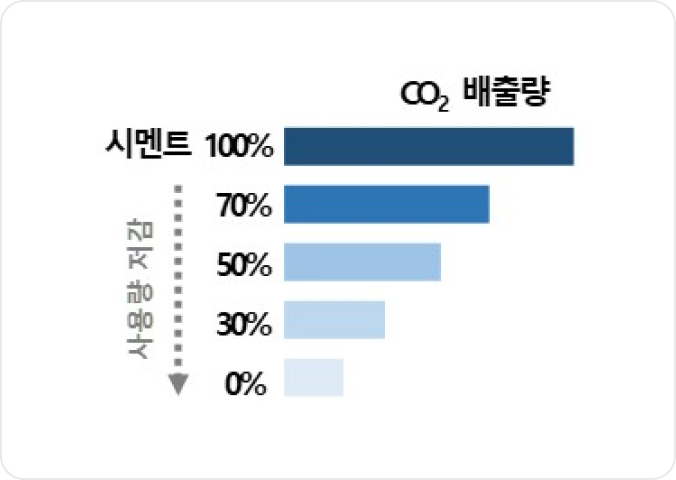
Decreased CO₂ emissions due to reduced cement consumption
-
- High-elasticity Concrete Technology
- Increasing the dynamic stiffness of concrete is essential for vibration control in high-specification semiconductor production equipment. Through material selection and mix design optimization, this technology manufactures high-elasticity concrete and precast concrete (PC) with an elastic modulus that is 30-60% higher compared to conventional concrete.
-
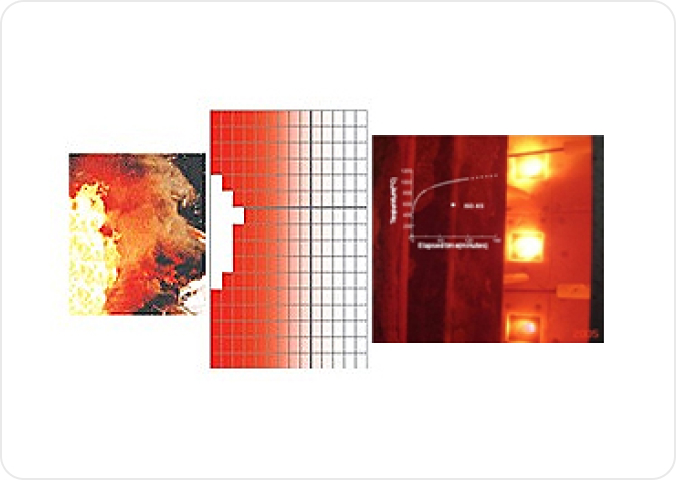
High-elasticity concrete application in precast grid beams
-
- Ultra-high Strength Concrete Mixing Technology
- As this innovative technology enables the production of high-strength concrete, ranging from 40 MPa to a maximum of 200 MPa ultra-high strength concrete (capable of supporting a 2.0-ton load on a 1 cm² area), it is an essential material technology for constructing super-tall buildings.
-
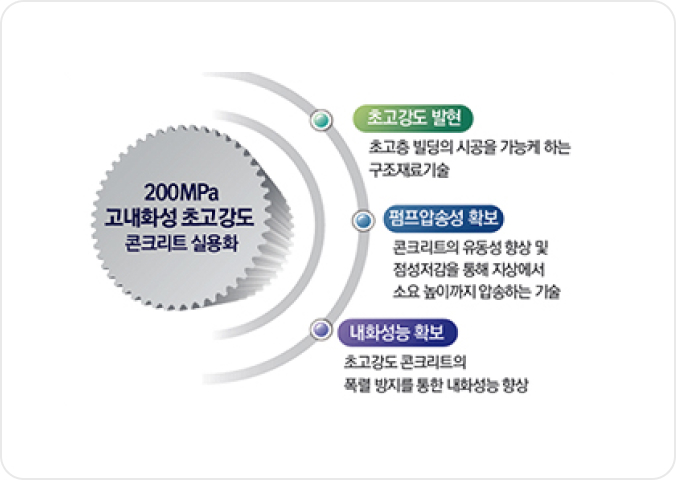
200 MPa ultra-high strength concrete core technology
-
- Early Strength Concrete Technology
- A vital technology for 3-day cycle construction in mixed-use complexes, apartments, and buildings, early strength concrete provides 1.5-2.0 times faster early strength development compared to conventional concrete. This shortens formwork removal time by 40%, achieving a significant reduction in construction time.
-
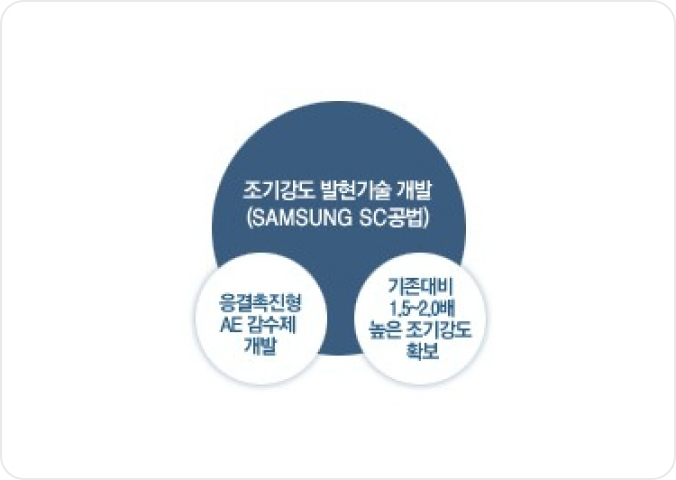
Early strength concrete
-
- Self-consolidating (Non-vibrated) Concrete Technology
- This technology allows for concrete placement without separate compaction work, making it suitable for thin or sloped columns or walls, densely reinforced elements, and the placement of large quantities of concrete in a short time.
-
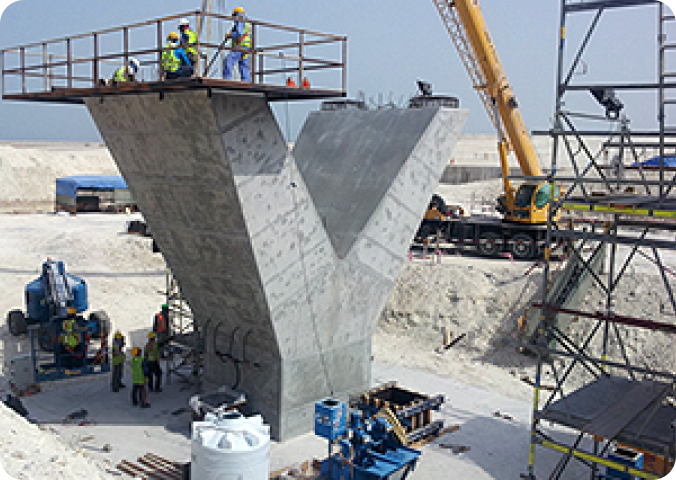
Sloped or densely reinforced placement
-
- Crack-reducing Concrete Technology
- By reducing drying shrinkage, a major cause of cracks in large horizontal structures such as slabs and walls with strong underlying constraints, this technology effectively minimizes concrete cracks by up to 50% compared to conventional concrete.
-
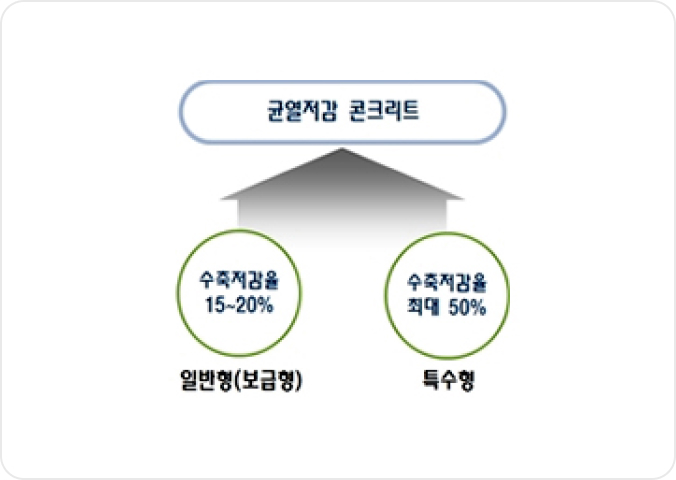
Crack-reducing concrete types
-
- Low-strength Concrete Technology
- Economical low-strength concrete (approximately 5 MPa) can be used for ground replacement or backfill materials. This technology enables a cost reduction and construction time savings by allowing subsequent processes to proceed the day after construction.
-
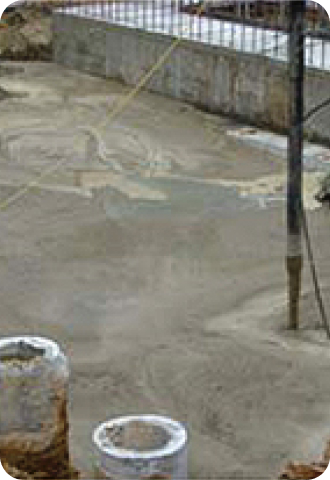
Ground replacement
-
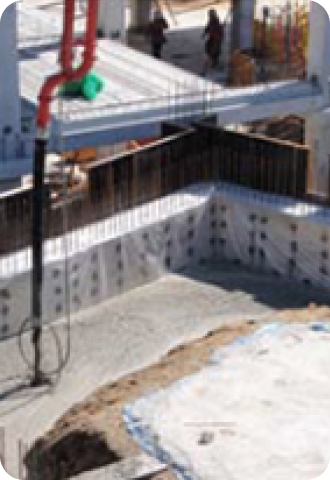
Underground wall backfill
-
- Color Concrete Technology
- Utilizing inorganic pigments, this concrete manufacturing technology creates a range of colors, from black and white to the optimal shade, based on the architect's design intention for traditionally light gray concrete.
-
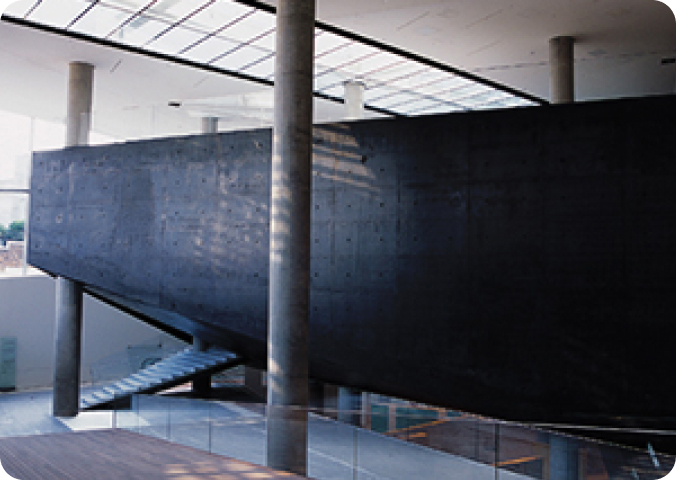
Leeum Museum of Art’s black concrete
-
- Super High-rise Pumping and Simulation Technology
-
This technology predicts and evaluates the maximum height to which concrete can be pumped from the ground before constructing a super high-rise building, ensuring the production of concrete that can be pumped to the building's final height.
* World record holder for vertical concrete pumping: Burj Khalifa, 601.7 meters
-
- High-durability Concrete Technology
- By quantitatively assessing and pre-simulating factors that degrade concrete’s durability (such as salt damage, carbonation, and freeze-thaw cycling), this technology evaluates the durability of concrete structures exposed to special environments, predicts their service life, and secures the target service life through the manufacture of suitable concrete.
-
- Mass Concrete Heat of Hydration Control Technology
- This technology addresses temperature cracking in large cross-section mass concrete caused by the heat of hydration during cement curing. By comprehensively considering factors related to design (mix) and construction (curing), the technology derives and applies the optimal construction method for controlling temperature cracks.
-
- Exposed Concrete Technology
- This concrete manufacturing and construction technology allows for the use of concrete's inherent color and surface texture without applying additional finishing materials after formwork removal.
-
- Structural Diagnosis and Repair and Strengthening Technology
- Through construction state diagnosis (displacement measurement) and durability evaluation (cracks, corrosion, carbonation), this technology assesses and analyzes the soundness of structures, proposing optimal repair and strengthening solutions based on the findings.